Rio de Janeiro, famous for its forest-covered mountains and golden beaches, will take your breath away with its dramatic scenery. Take a hike in the mountains and enjoy the colorful flora or visit one of the many architectural wonders and museums offered in beautiful Rio.
Corcovado: Christ The Redeemer Statue - One of the New 7 Wonders of the World
 This is one of the main beauty spots in the city, standing 2,330 feet above sea level and providing a sweeping panoramic view of sea and mountain, a world famous vista.
This is one of the main beauty spots in the city, standing 2,330 feet above sea level and providing a sweeping panoramic view of sea and mountain, a world famous vista.
The mountain is crowned with the statue of Christ, 98 feet high with a 26 foot pedestal containing a chapel that can hold 150 people.

The top of the Corcovado can be reached by electric train or by car. Reach the top of "Corcovado" by rail.
A modern Swiss-made cogwheel rail climbs through "Tijuca" Rain Forest to the top of the mountain (710 meters). The cogwheel takes about 17 minutes, at a maximum speed of 15km/h on its way up, and 22 minutes, at 12km/h, on its way down.
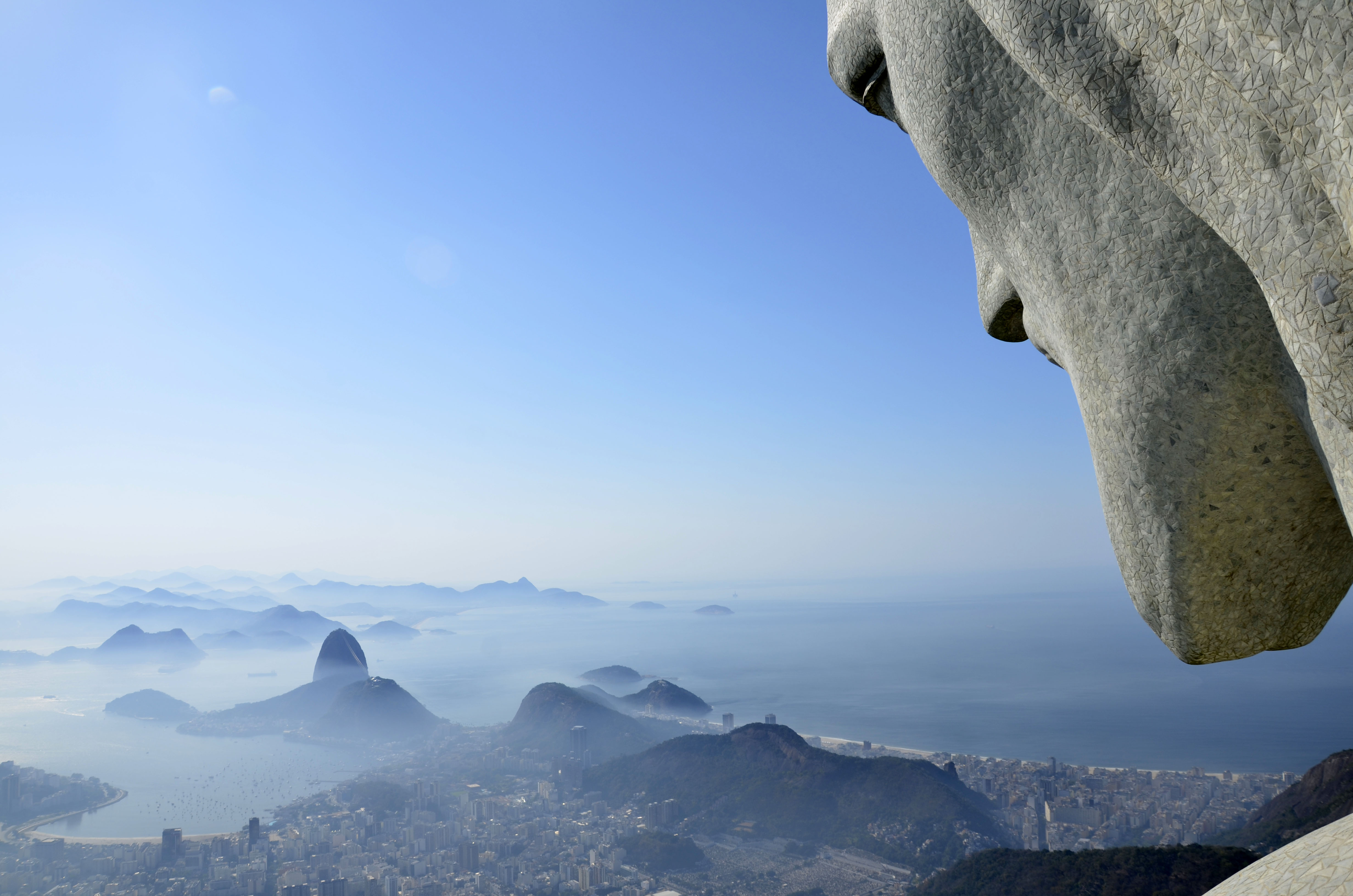 One of the most amazing views during this trip is the one of "Lagoa Rodrigo de Freitas".
One of the most amazing views during this trip is the one of "Lagoa Rodrigo de Freitas".
At the very top of the mountain, carved in soapstone mosaic in the finest art nouveau style, stands the Christ the Redeemer, a 38 meters tall statue with arms outstretched as if it were blessing the city. The above view of nearly the entire city is nothing but breathtaking.
Sugar Loaf
 This natural symbol of Rio de Janeiro can be seen at the entrance to Guanabara Bay. There are two stages in the cable-car trip to the top of the rock. The first is from the station at Praia Vermelha to Urca Hill, which rises 705 feet above the bay, which already grants beautiful views of Guanabara Bay and its islands, the Rio-Niterói Bridge and Corcovado Mountain. From this stage, a second cable car takes us up to the second Hill, called “Pão de Açúcar” (Sugar Loaf). At 395 meters we’ll enjoy splendid views of Copacabana beach, the Santa Cruz fortress and several beaches of Niterói. You will for sure be amazed by the awesome views. Each stage lasts three minutes.
This natural symbol of Rio de Janeiro can be seen at the entrance to Guanabara Bay. There are two stages in the cable-car trip to the top of the rock. The first is from the station at Praia Vermelha to Urca Hill, which rises 705 feet above the bay, which already grants beautiful views of Guanabara Bay and its islands, the Rio-Niterói Bridge and Corcovado Mountain. From this stage, a second cable car takes us up to the second Hill, called “Pão de Açúcar” (Sugar Loaf). At 395 meters we’ll enjoy splendid views of Copacabana beach, the Santa Cruz fortress and several beaches of Niterói. You will for sure be amazed by the awesome views. Each stage lasts three minutes.
Botanical Garden
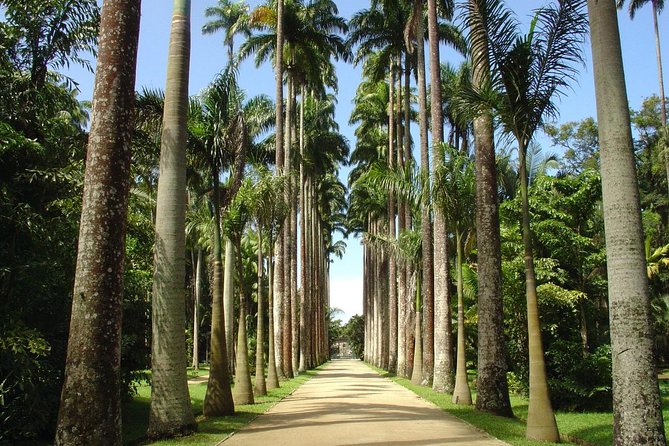 The Rio Botanical Garden covers an area of 340 hectares, where 54 hectares are cultivated, and the other 83 hectares are still of native vegetation. The cultivated area is divided into 24 rows, 40 sections and 40 garden beds, totaling almost 6.000 species, some of the most impressive being the Imperial Palms planted in 1842.
The Rio Botanical Garden covers an area of 340 hectares, where 54 hectares are cultivated, and the other 83 hectares are still of native vegetation. The cultivated area is divided into 24 rows, 40 sections and 40 garden beds, totaling almost 6.000 species, some of the most impressive being the Imperial Palms planted in 1842.
The history of the Botanical Garden of Rio de Janeiro begins with the arrival of the Portuguese Royal Family to the country in 1808. Shortly after arriving, the Prince João VI founded the Botanical Garden ordering the construction of an acclimatization garden for growing species brought from the East Indies.
The Garden also houses monuments of historical, artistic and archaeological significance. The Botanical Garden has an important research institute, which develops a wide range of botanical studies in Brazil.
Maracanã
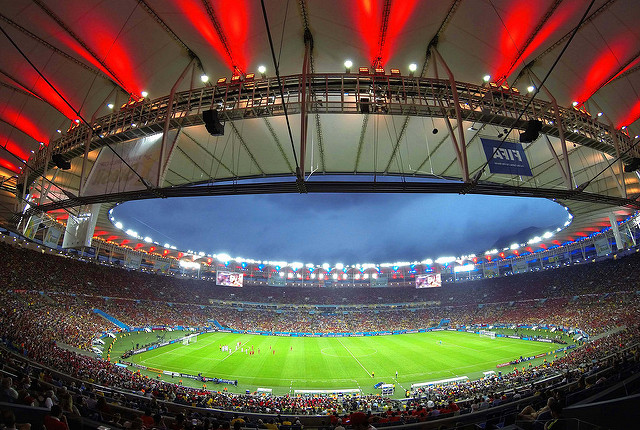 One of Rio’s most famous picture postcards has just been totally restored and refurbished. The Mário Filho Stadium, known worldwide as Maracanã, has just suffered the greatest restoration in its history, in order to adapt to FIFA international standards.
One of Rio’s most famous picture postcards has just been totally restored and refurbished. The Mário Filho Stadium, known worldwide as Maracanã, has just suffered the greatest restoration in its history, in order to adapt to FIFA international standards.
The stadium, which hoste the final of the 2014 World Cup, has a Sidewalk of Fame and its own museum, showing among other things the ball from Pelé’s thousandth goal. The surrounding area is also benefiting from various improvements, with a view to facilitating the flow of traffic and pedestrians.
Praias (beaches)
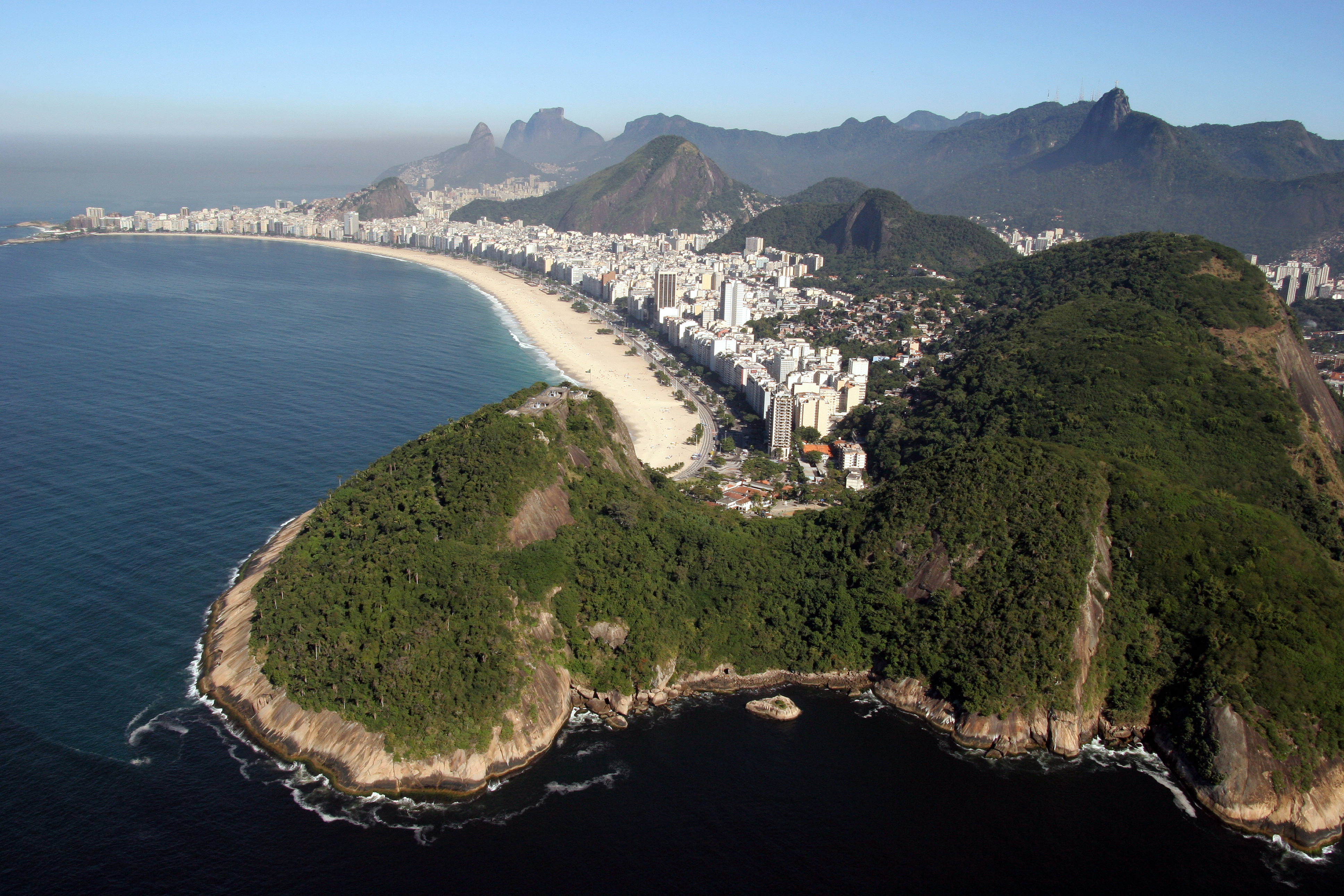 Rio has 90km of white sand beaches of which the following are the most interesting: Copacabana, Arpoador, Leme, Ipanema, Leblon, Vermelha, São Conrado, Barra da Tijuca, Recreio dos Bandeirantes, Prainha, Grumari, Macumba.
Rio has 90km of white sand beaches of which the following are the most interesting: Copacabana, Arpoador, Leme, Ipanema, Leblon, Vermelha, São Conrado, Barra da Tijuca, Recreio dos Bandeirantes, Prainha, Grumari, Macumba.
Lapa Arches and Santa Teresa district
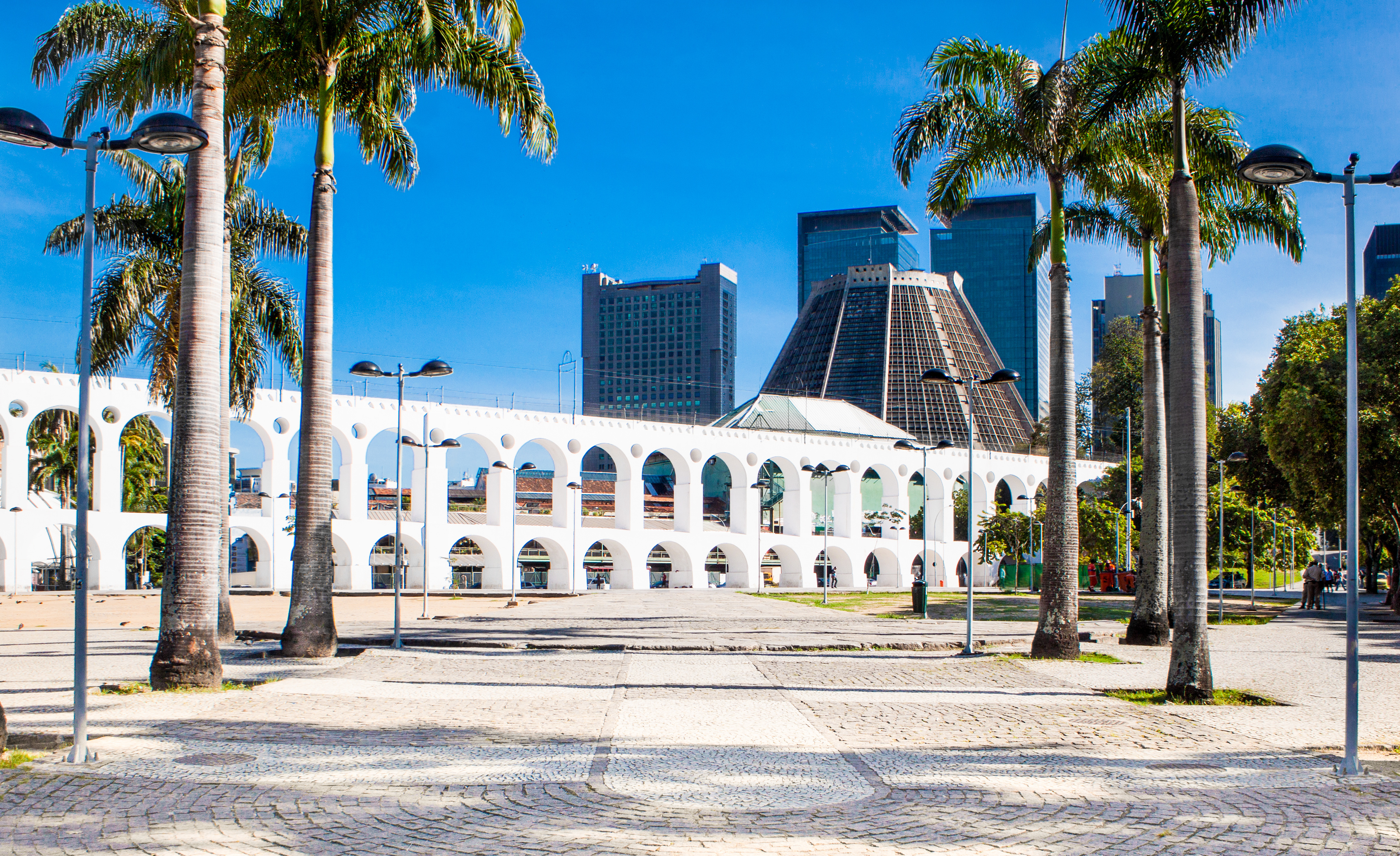 Located in the Largo da Lapa Square, the center of Rio’s turn-of-the- century nightlife, the Lapa Arches hold their place in history as the most monumental work undertaken in colonial Rio.
Located in the Largo da Lapa Square, the center of Rio’s turn-of-the- century nightlife, the Lapa Arches hold their place in history as the most monumental work undertaken in colonial Rio.
This magnificent structure contains 42 arches in two tiers. Originally built as an aqueduct to supply the city with water, today they carry another outstanding attraction: the scenic tramlines linking the Carioca Station downtown to the picturesque Santa Teresa district, a vibrant artistic community, with a great range of bars, restaurants, museums, cultural centers and artist’s studios.
Tijuca Forest
 Rio’s largest park is the Tijuca National Park, covering 3,300 hectares, and including Tijuca Forest. The Park is the largest urban forest in the world. As you look up at the Corcovado from the Lagoa, the mass of greenery clinging to the edge of the mountain and stretching miles to your left, is the Tijuca National Park. Roads run through the entire length of the park allowing visitors to enjoy its many natural wonders, and at the weekend some of the routes become pedestrian only.
Rio’s largest park is the Tijuca National Park, covering 3,300 hectares, and including Tijuca Forest. The Park is the largest urban forest in the world. As you look up at the Corcovado from the Lagoa, the mass of greenery clinging to the edge of the mountain and stretching miles to your left, is the Tijuca National Park. Roads run through the entire length of the park allowing visitors to enjoy its many natural wonders, and at the weekend some of the routes become pedestrian only.
Rio’s Art Museum
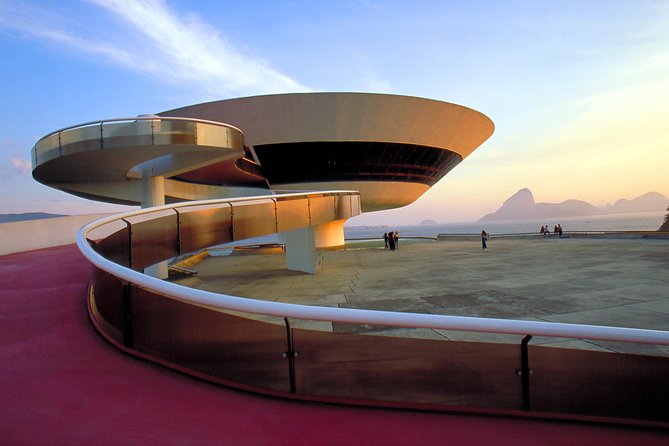 The recently inaugurated Museum of Art is in Rio’s Port zone, and with its restoration is becoming a strong tourist attraction. It is divided into two buildings. One is the Dom João VI Palace, listed and eclectic in style, containing the museum’s exhibition rooms.
The recently inaugurated Museum of Art is in Rio’s Port zone, and with its restoration is becoming a strong tourist attraction. It is divided into two buildings. One is the Dom João VI Palace, listed and eclectic in style, containing the museum’s exhibition rooms.
The second building is modern and hosts the art school “Escola do Olhar” (School of Vision), which focuses on the training of public school teachers. Exhibitions at the MAR unite historical and contemporary art through long and short term exhibitions, from national and international sources.
Museum of Tomorrow
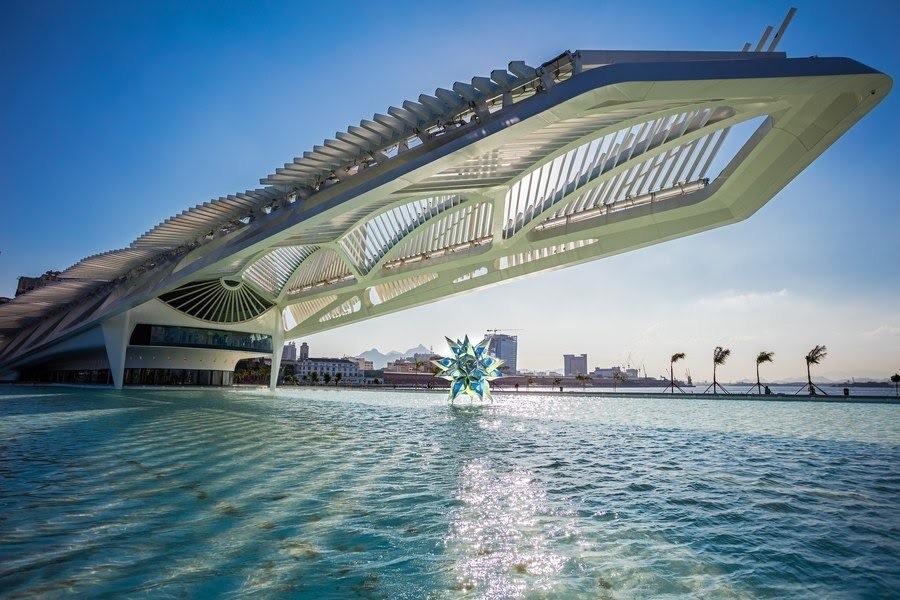 The Museum of Tomorrow (Portuguese: Museu do Amanhã) is a science museum in the city of Rio de Janeiro, Brazil. It was designed by spanish neofuturistic architect Santiago Calatrava, and built next to the waterfront at Pier Maua.
The Museum of Tomorrow (Portuguese: Museu do Amanhã) is a science museum in the city of Rio de Janeiro, Brazil. It was designed by spanish neofuturistic architect Santiago Calatrava, and built next to the waterfront at Pier Maua.
The museum has partnerships with Brazil’s leading universities, global science institutions and collects real-time data on climate and population from space agencies and the United Nations. It has also hired consultants from a range of related fields, including astronauts, social scientists and climate experts.



















